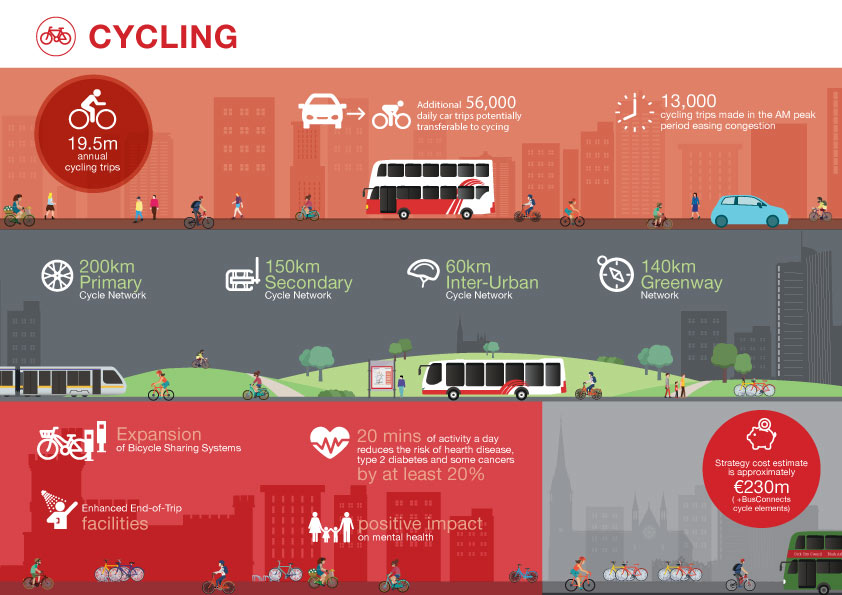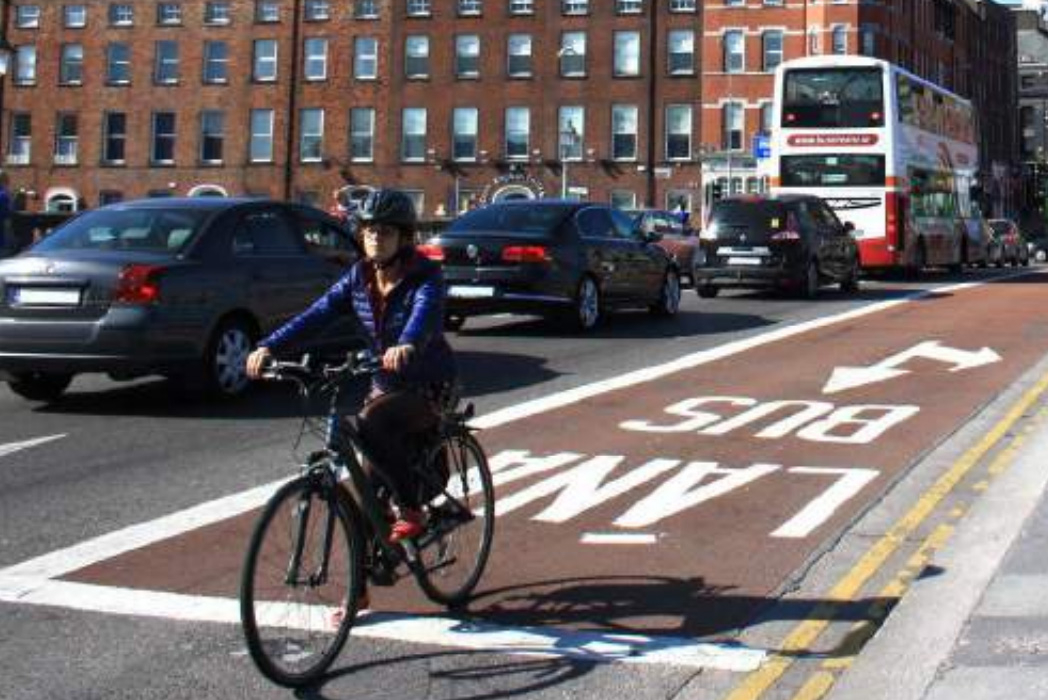Cycling is a low cost, sustainable and growing mode of transport in the Cork Metropolitan Area. The NDP 2018-2027 commits to the delivery of walking and cycling networks for all of Ireland’s cities. Translating this at a regional level, the Cork Cycling Network Plan for the CMA and surrounding towns was published in 2017.
Additional cycle links have been proposed to align with the CMATS proposed public transport networks including BusConnects and new orbital link roads. These upgraded routes will be characterised by high quality facilities designed to National Cycle Manual standards and in many cases, full or light segregation, where possible, from other modes including the provision of quiet ways and greenways. Local traffic calming, improved priority and signalling at junctions and lower speed limits will be required in some instances, particularly at complex junctions in an urban context. Other supporting infrastructure measures to further develop a cycling culture in Cork will include the further roll out of bike share schemes including consideration of dockless bikes, shower and changing facilities, and a significant uplift in residential, visitor and workplace cycle parking.
Key priorities for the development of the Cork Cycle Network Plan include:
- Designating a coherent network of east-west and north-south cycle routes across the CMA which will provide access to all major trip generators;
- The first priority in terms of access will be employment areas and third level education followed by schools. These priorities have been established to support proposed modal shift targets. Cycle links to new development areas have also been prioritised;
- Providing the highest possible Level of Service on identified corridors of high demand;
- Identifying and maximising opportunities for high quality greenways; and
- Responding to feedback from key stakeholders and the public. Based on the recommendations within the National Cycle Manual a number of different infrastructure types are proposed at various locations within the network, including:
- Cycle Lanes: Incorporates a dedicated space adjacent to the kerb or car parking and can take the form of mandatory or advisory cycle lanes;
- Mixed Streets: Suitable in low traffic environments where the cyclist shares the road space with motorists;
- Cycle Tracks: Cycle tracks are different from cycle lanes in that they are physically segregated from motorised traffic in some way whether by a barrier or through a level change;
- Cycle Trails or Greenways: Roads and paths through green areas and parks;
- Quietways: Quietways are convenient cycle routes on lower trafficked residential streets and greenways. They are designed to be well-signposted, direct and easy to follow for those who would prefer to cycle on quieter, calmer routes.
Other supporting infrastructure measures to further develop a cycling culture in Cork will include the further roll out of bike share schemes including consideration of dockless bikes, shower and changing facilities, and a significant uplift in residential, visitor and workplace cycle parking. The objective for cycling is to develop a comprehensive network of safe Primary, Secondary, Inter-Urban and Greenway cycle routes across the CMA. Cork will build upon recent increases in cycling levels to significantly increase the number of utility trips including those to school, work and as part of linked trips with public transport. Cycling will be prioritised in all new road projects, local traffic management schemes and permeability measures and given prominence within Local Authority structures.

